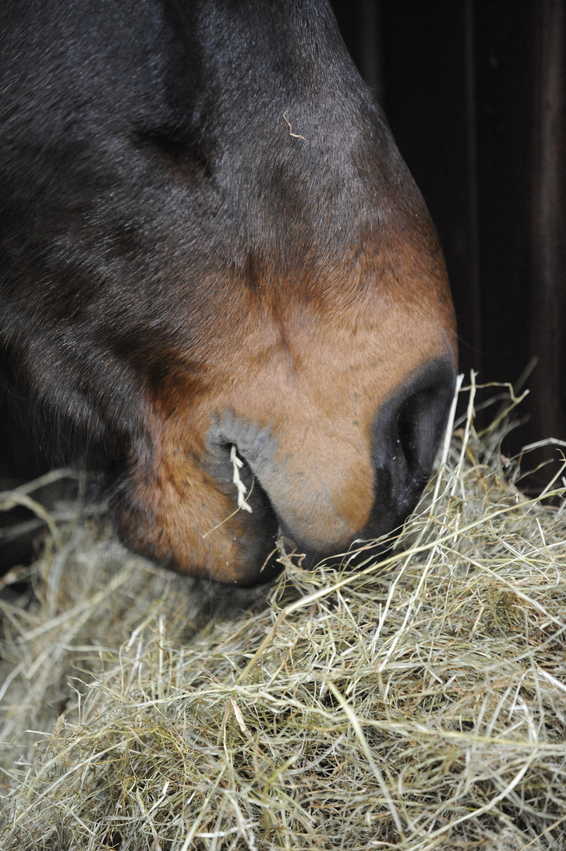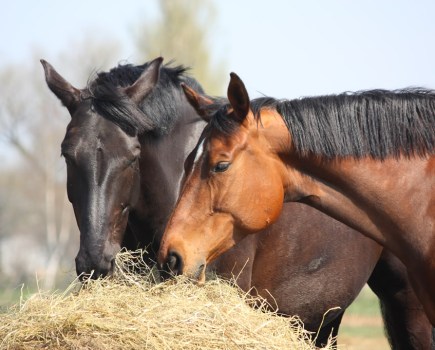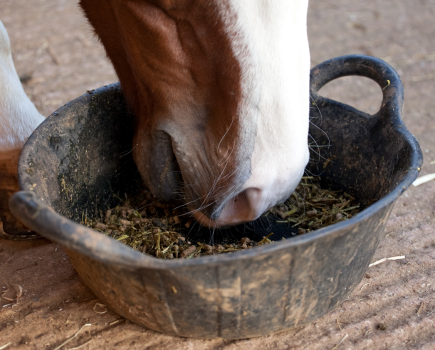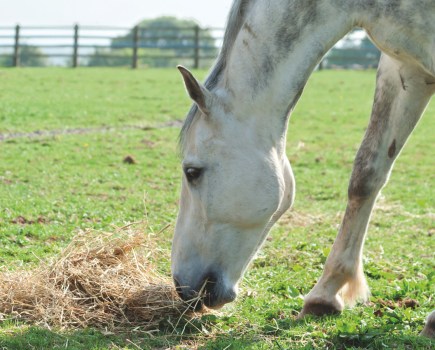Feeding a horse with ulcers can be tricky. Although stomach ulcers in horses may seem like a new trend, they’ve probably been around for much longer than we realise. Developments in technology have meant that vets can now endoscope horses and see the ulcers in the stomach, adding to our understanding of the condition.
What causes gastric ulcers?
There are many factors that can contribute to a horse developing gastric ulcers, but it’s important to consider the horse’s evolution.
A horse’s stomach is continually producing acid to help with their digestion. As horses have evolved to spend much of their life grazing, they buffer the acidic contents of the stomach by chewing and producing alkaline saliva. Grazing also provides the fibre that protects the stomach lining from the acid.
Our domestication of horses has meant that they now spend more time in the stable and less time eating. When the horse goes for prolonged periods with an empty stomach and not chewing, the acid is still being produced, but without the alkaline saliva to neutralise it.
High-intensity work is also thought to be a contributing factor to a horse getting ulcers, especially if they work on an empty stomach. It’s thought that high-intensity exercise can cause the stomach acid to splash up and damage the upper non-glandular part of the stomach.
How do I know if my horse has stomach ulcers?
The only definitive way to know if a horse has ulcers is to use a gastroscope, but there are a range of symptoms you can look out for including:
- Losing weight
- Dull hair coat
- Girthy
- Poor performance
Anything that puts your horse off form, or makes you think they’re not at their best, could be a warning sign. The only way to truly diagnose this condition is by using a gastroscope.
What to feed a horse with ulcers?
Clare Barfoot from SPILLERS gives the following advice:
If your horse does have ulcers, as well as having veterinary treatment it’s advisable to change his diet and management regime to reduce the risk of them re-occurring.
Feed your horse as much fibre/forage as possible at a minimum of 1.5% of bodyweight (dry matter) per day and always try to avoid prolonged periods without forage. Horses have evolved to be trickle feeders and need to eat little and often. Try and turn him out as much as possible and always ensure you provide forage while travelling.
If you think he needs extra energy, look for feeds that have restricted starch and sugar levels and added oil rather than cereals.
It’s important that you try to spread meals across the day- multiple small meals are better than one or two large ones and adding chopped fibre to every meal can really help (especially alfalfa, which has been shown to help buffer gastric acid).
You should avoid very stalky sharp chopped fibre, which can increase the risk of damage to the stomach wall and ensure you provide a small chopped, fibre based meal or access to forage before exercise to reduce gastric acid splashing up onto the sensitive unprotected upper non-glandular part of the stomach.









